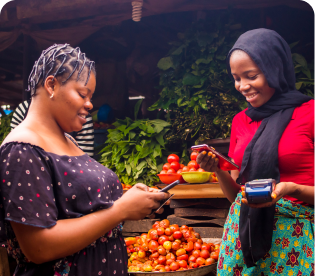- Home
Guides Guides
Using Local Payment Methods in Cross Border Payment Gateways: Faster, Cheaper, and Higher Conversions
Using Local Payment Methods in Cross Border Payment Gateways: Faster, Cheaper, and Higher Conversions

With the advent of digital technology, more opportunities have emerged for businesses to expand their scope around the globe. However, digitisation in each region and country developed differently, and this also affects the way consumers behave around the world of online payments.
To cater to these behaviours, local payment methods were developed to suit consumer behaviours in different parts of the world, so it bears noting what local payment methods are, and why they arose in the first place.
1. What are Local Payment Methods? Why did these Different Payment Methods Arise?
Local payment methods refer to payment methods that are different from most standardised international payments, such as international cards and wire transfers. These are also known as alternative payment methods (APM) and vary by regions and countries.
Part of the reason why these alternative payment methods develop can be due to many factors, such as:
- Existing infrastructures
- Consumer behaviour
- Government intervention
For instance, while both the Philippines and Ghana have large unbanked populations, how these two countries developed their alternative payment methods are very different. Where the Philippines saw the adoption of eWallet providers by startups, Ghanaians prefer Mobile Money transactions run by existing telco companies.
Because of this, it is important to take a deeper look into your target market’s buyers in terms of their preferences, pain points, and what they want.
2.Why Offering Multiple Local Payment Options Matter?
In addition to learning more about your buyers habits, it also helps to be able to offer them their preferred payment options.
By doing so, you get to reap the benefits of:
- Existing infrastructures
- Consumer behaviour
- Government intervention
For an in-depth explanation, we cover this over at our article:
Why Multiple Localised Payment Methods Matter For International Checkout
Implementing multiple payment options may seem complicated at first. Most payment gateways usually offer only one type of payment method, the steps of API integration can vary between payment gateways, and some APMs require you to register with a local business entity to enable their services on your website.
However, with Omoney, you don’t need to worry about all that hassle. Get more than 80 countries local payment methods and local currency collection all in a single integration or plugin.
3.How Much Does it Cost to Include a Local Payment Method for International Payments?
In the business world, there’s no such thing as free lunch. This also applies for when you decide to integrate payment method providers into your website.
When integrating with a payment method provider, you’ll need to consider the following costs:
- Setup fees: is there an upfront fee that you need to pay to use the service?
- Platform fees: how much does it cost to use the service? Is it a flat fee on all transactions, a percentage cut, or a mix of both?
- Payout options: does the payment provider pay to your business account in the same currency as what your buyer pays or do they allow payouts in your currency or universal currencies like the US dollar, Euro, or British pound?
- FX rates: how are the exchange rates like if the payment provider pays out in universal currencies or your own local currency?
With that in mind, it helps to get a detailed breakdown of the actual costs in a payment gateway so that you can come to an informed decision on which one best suits your business.
Now that you have an understanding on what it takes to accept payments with a local payment method, let’s explore how they work in your target region. This section will be updated as we go along.
4.Payment Methods by Region
Some local payment methods have been developed to cover a wide span of countries. Have a look at what these are by the region they operate in:


















